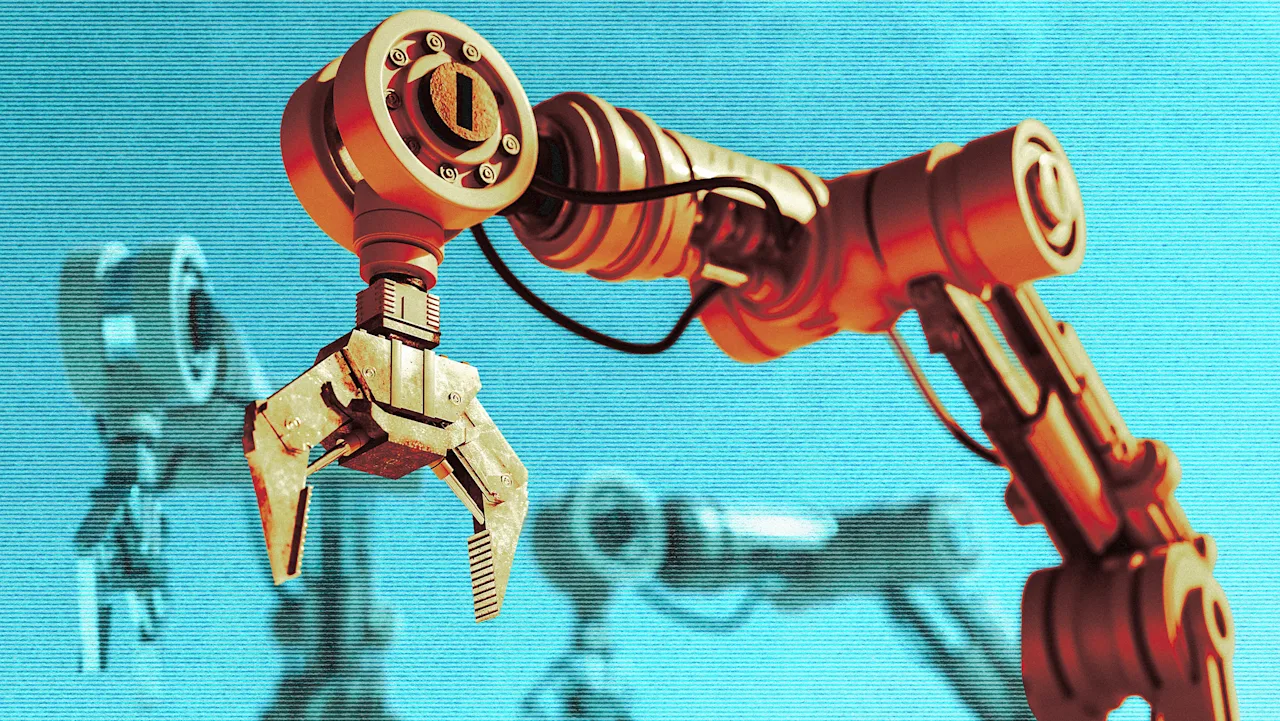
Ia the AI technologies to advanced robotics have been held for their ability to illuminate people’s workload. But despite their promises, these technologies are not being used to improve the life of workers or keep them safe. In 2023, 385 workers died every day due to dangerous working conditions, with more than 3 million injuries and diseases more related to the work reported that year in the United States.
Meta, Microsoft, Amazon and Alphabet spent a collective of $ 155 billion in the development of AI in the first six months of 2025, near what the entire United States government has spent on education, employment and social services since the beginning of ITTE. However, very little of this investment has gone to make the life of workers safer. What does this say about us as a society?
In medical care, a common cause of injuries in the workplace, tension of lifting and physically attending patients is. Assistance technology could greatly contribute to preventing these common lesions, technologies such as robotic exoskeletons, which can be applied in health environments for this purpose, already exist. But we do not see that companies accelerate to build the best robotic assists for care workers. Instead, thousands of companies are creating chatbots that replace their customer service or automatic entry level roles.
In fact, real robots seem to be doing warehouse workers worse. The acceleration of robotics processes requires that workers also accelerate, which causes major injuries. Several investigations have found greater rates of injuries in warehouses that use robotics; Between 2016 and 2019, Amazon warehouses with robots had a 50% high injury rate than those who do not. And only in 2020, when Amazon temporarily relaxed many of his requirements to work at a certain rhythm, warehouses with robotics had a rate of injury 14% higher than those that not.
Although warehouse robots now come with more safety protections, the update of older equipment with new security features does not seem to be a priority. In fact, security does not seem to be a priority.
Duration A visit to a large warehouse installation a few years ago, I saw the workers pack at the speed of the lightning, surrounded by screens and robots. I also saw an aggressive signage through the installation, warning workers that heavy machines could begin to move at any time. The message was clear: if it was Kured, it was his fault for not the bees careful enough.
The negligence or safety of workers is not new: through history, the speed of production and profits of the United States have exceeded the value of human life. While the Office of Labor Statistics (BLS) shows a workshop in the workplace in general quite consisting of injuries and deaths in the workplace, the change is tiny: the injuries have decreased from 2.8 per 100 workers in 2019, to 2.4 for the work of work work work work work work work work work work work work work work work work work work work work work work Work work work work work work work work work work work work work work work Work of work of work of work of work of work of work of work, Deanthile, Deanthile, Deaththile, Deanthile, Deanthile: the black workers faced their highest death rates in 20 years, and the deaths of Latin workers have increased firmly since 2020.
There are powerful health and safety technologies, but there are very underutilized. A new sensor could help agricultural workers, one of our most poorly paid but important labor forces, to prevent dangerous heat -related diseases. Last intelligent devices can monitor air pollution and alert workers, from miners to cleaners, or dangerous air quality. Another intelligent technology can help correct a bad posture that could cause injuries or ensure that the machinery goes out automatically if a worker approaches too much. These technologies could harm many workers, but we need to invest in them and the power of their decision -making and workers’ decision -making to ensure that the technologies in which we invest address their effective needs.
There are companies that lead the way for consulting to workers by implementing new technologies, such as Microsoft, which is working in association with the American Federation of Work and the Congress of Industrial Organizations (AFCI) to obtain workers in the development of artificial intelligence. However, it is unlikely that many lower salary professionals obtain the necessary investment to implement advanced workers’ safety technology. Security regulations are needed in the updated workplace, which represent the possibilities unlocked by new technologies, are necessary to ensure that workers have access to rescue equipment.
When I imagine an economy that uses advanced technologies, I do not think of one that workers get their amputated limbs in factories, they suffer pulmonary damage to cleaning chemicals or that stress lesions are requested to work faster and a faster payment.
We need bold action regulations that require the use of security technology, incentives for companies that invest in you and voices of workers at the table. Policy formulators and business leaders can help us the right course; We need workers protections for a new era of technology and technology investment that focuses needs, and safety or workers.


